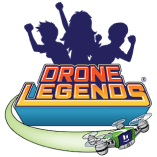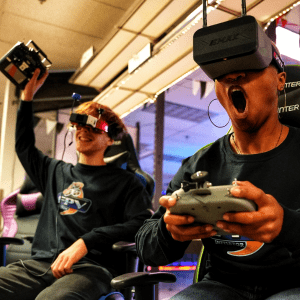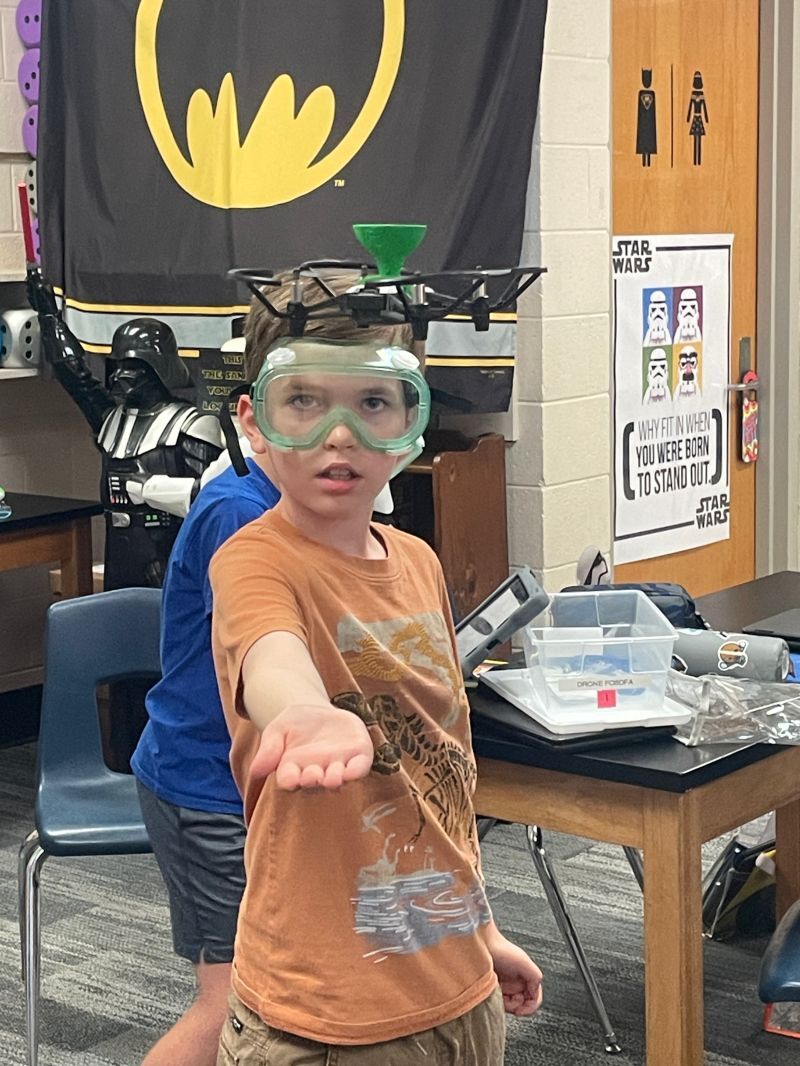This is the first in a series to inspire everyone in the Drone Legends community (administrators, educators, volunteers, parents, and kids) with a peek into how drones are used in the real world. First up, we’re exploring drones and agriculture. Ben Wark, a director from the international AgTech company, Dimitra, shared with us how drones help farmers in the world today.
Drones have advanced global agriculture in the past several years, and it’s only the beginning. How the population cultivates and consumes food is a huge concern when thinking about the future of humanity. Amidst climate change and population growth (expected to reach 9.8 billion people by 2050), improving agriculture is a top priority in every country.
How are drones changing the world in the farming industry, and what can be improved? Keep reading to learn and be amazed.
Drones and Farming
The global market for drones reached over $19 billion in 2020. By 2028, the compound annual growth rate (CAGR) of the agricultural drones market is expected to grow up to 20%.
From precision farming to livestock tracking to pest management, drones are the key to making farms more sustainable and productive. And they’re already helping farmers do this.
One rice farmer in Thailand turned to drones during the COVID-19 pandemic when his family’s multigenerational farm could no longer afford to pay labor workers. With the help of drones and AgTech, he was able to not only save labor costs but also improve production. Although the people in his region lack technological training, he began sharing the benefits of agricultural drones with other farmers in the community.
To confront the issue of deforestation, an Australian company, AirSeed Technology, started using drones to plant up to 40,000 tree seeds per day. Compared to traditional tree planting methods, these drones are cheaper and a lot faster, giving hope to countries that want to optimize their reforesting initiatives.
Drones may even be able to overcome pollination issues. Combining nano drones and artificial intelligence, robotic “bees” have been in development for some time to hopefully give farmers more control over their pollination and crop production.
“If you love technology and want to help the future of agriculture, use your imagination. Think of what can be done next. Knowing that drones already have such amazing capabilities, the sky’s the limit.” – Ben Wark, Dimitra
Use Cases for Drones in Agriculture
The commercial use of agricultural drones began in the 1980s and became widespread in recent years. After the FAA approved the Yamaha RMAX for autonomous flight in agriculture, drones have advanced in accuracy, decreased in size, and expanded in their wide range of uses.
From 200-pound remotely-piloted drones to lightweight, fully-programmed microdrones, farms in countries all around the world rely on drones for a wide variety of uses. How drones are used on farms depends on several factors:
- Location and climate
- Farm size
- Farm type (crop, livestock, mixed)
- Integration capabilities
- Purpose of the drone
A few of the main uses for drones in farming include crop planning, pest control, soil analysis, weather tracking, and livestock management. No matter how drones are used, they repeatedly decrease common farming risks and reduce costs while increasing production.
Drones and Irrigation
Until the introduction of drones in agriculture, irrigation was difficult to manage and often resulted in water waste. Drone computer technology can closely monitor crop field irrigation using microwave imaging, which allows drones to sense the moisture levels of plants and then water dry areas instead of the whole crop.
Agriculture drones also monitor the valuable water sources farmers rely on. They can provide farmers with critical data points such as daily or weekly water level changes, future drought warnings, and water quality fluctuations.
Drones and Pest Control
Everything from insects, weeds, rodents, and thieves can be closely watched and deterred using drones. Because drones can operate lower to the ground with higher precision than helicopters, farmers prefer UAVs for pest management. (Bonus: drones are more affordable.)
Pest prevention is typically used in the form of sprays or pesticides. Using heat mapping, drones can notify farmers of hotspots for potential infestations. This allows farmers to make informed decisions about where to inspect, spray, or replant to prevent large-scale crop loss.
When it’s time to use biological controls like sprays, pesticides, or fertilizers, drones allow accurate and even application while decreasing human workers’ contact with potentially harmful chemicals.
Monitoring Soil Conditions
Precision agriculture drones help monitor field and soil conditions. RGB (red green blue) and NDVI (normalized difference vegetation index) field mapping shows accurate conditions of elevation, soil drainage, nitrogen levels, and more.
A big part of soil health on large and smallholder farms is the practice of crop rotation, which is the practice of strategically rotating crops each season to encourage soil nutrient balance. UAVs help farmers plan crop rotations from a bird’s-eye view, and can help with soil sampling, 3D mapping, and runoff prevention.
Smart Farming: Drones as Agriculture Technology
Drone technology in agriculture is an example of the Internet of Things (IoT), connecting special devices and sensors that record data to a receiving end through the internet. This greatly benefits farming innovators because, well, drones don’t exist by themselves.
The most useful thing about agricultural drone usage? Drones integrate with many powerful technologies:
- Satellites
- Smartphones
- Power grids
- Farming machinery
- Cloud computing
- Government databases
- Machine learning and AI
- Computer programming
We have smart TVs, smart homes, and smart refrigerators— the world could use more smart farms. Thanks to drones and AgTech companies, this is possible virtually everywhere.
Drones and the Future of Agriculture
Data tracking, automation, planning, and precision are what the future is made of, including the future of farming. Using drones for agriculture minimizes risks and enhances this future for farms of all sizes.
At Drone Legends, we believe in the power of drones not only in agriculture but in all industries. We know that drones are the future— and so are kids.
Equipping the next generation with real-world knowledge of drones and technology is the key to unlocking what this future holds. STEM education using drones is a fun, hands-on way to teach kids about important industry applications. To inspire your fellow educators and your students to become the world’s next Legends, reach out to get started with a drone curriculum today.




